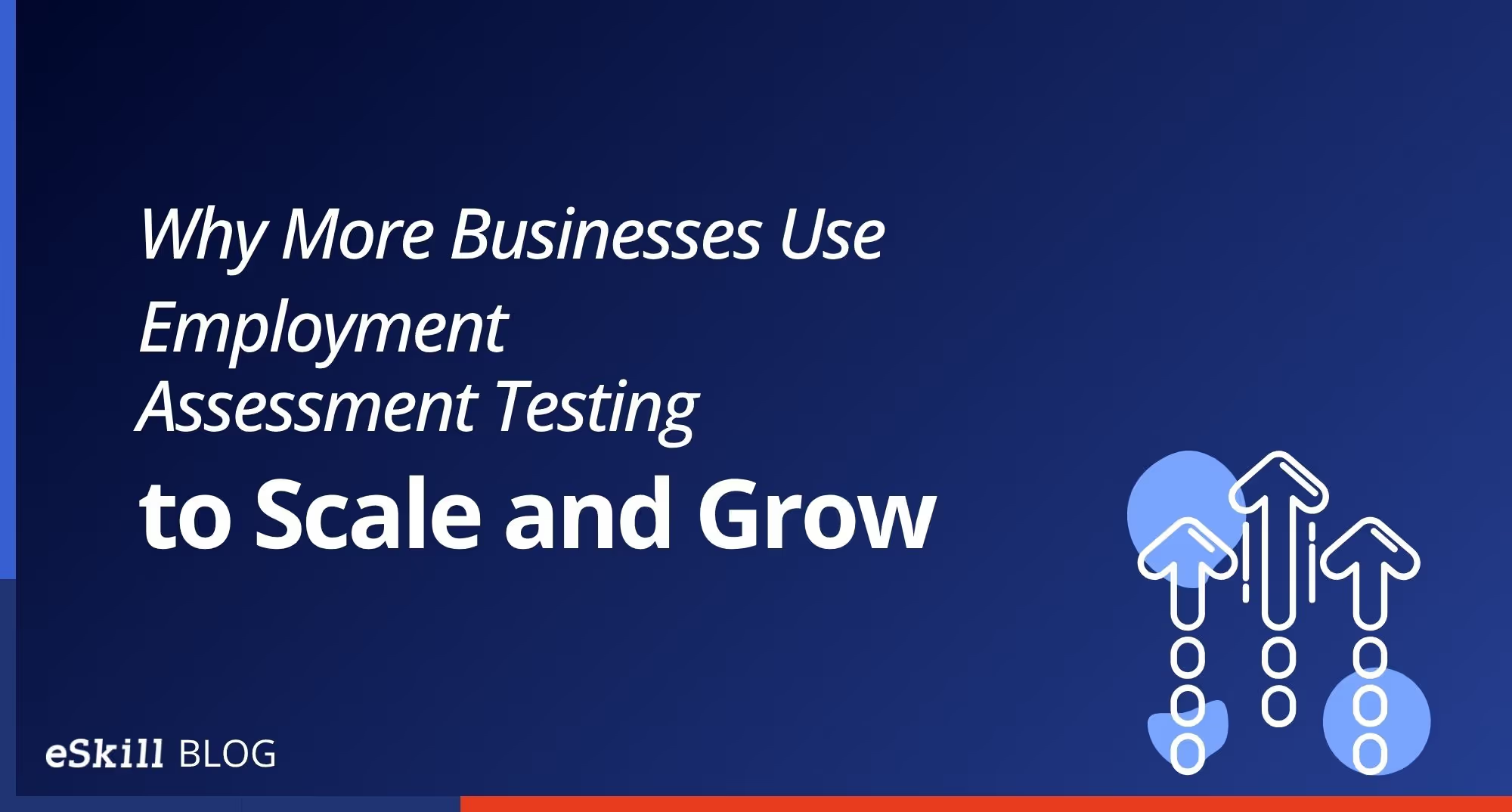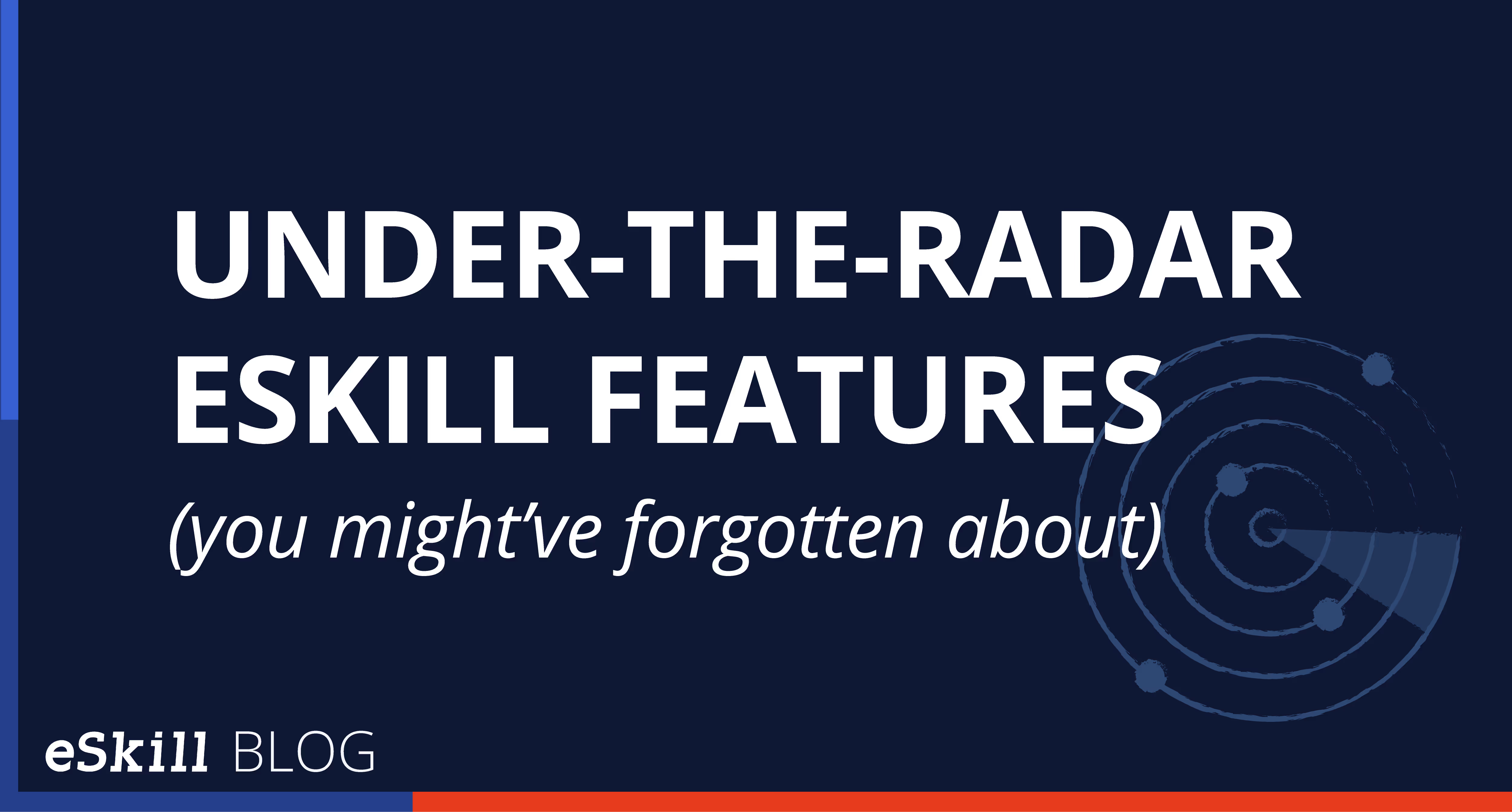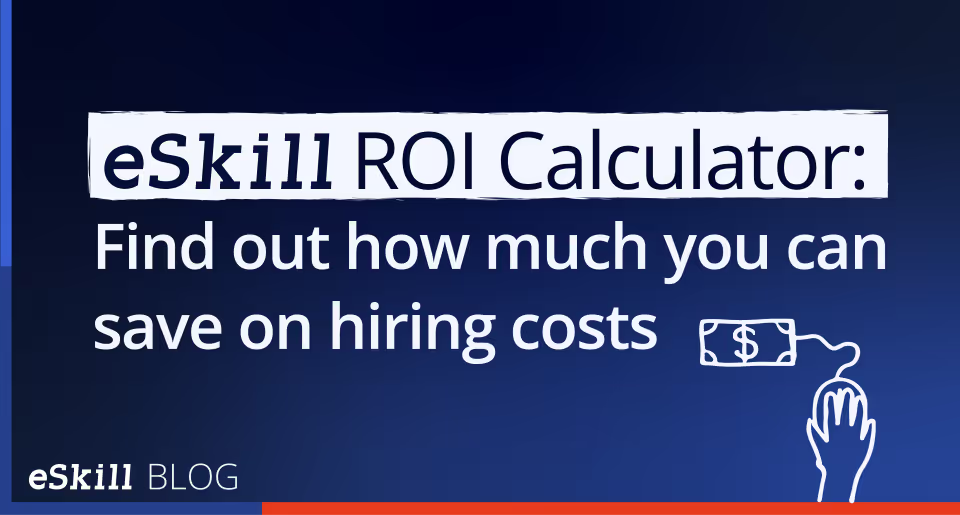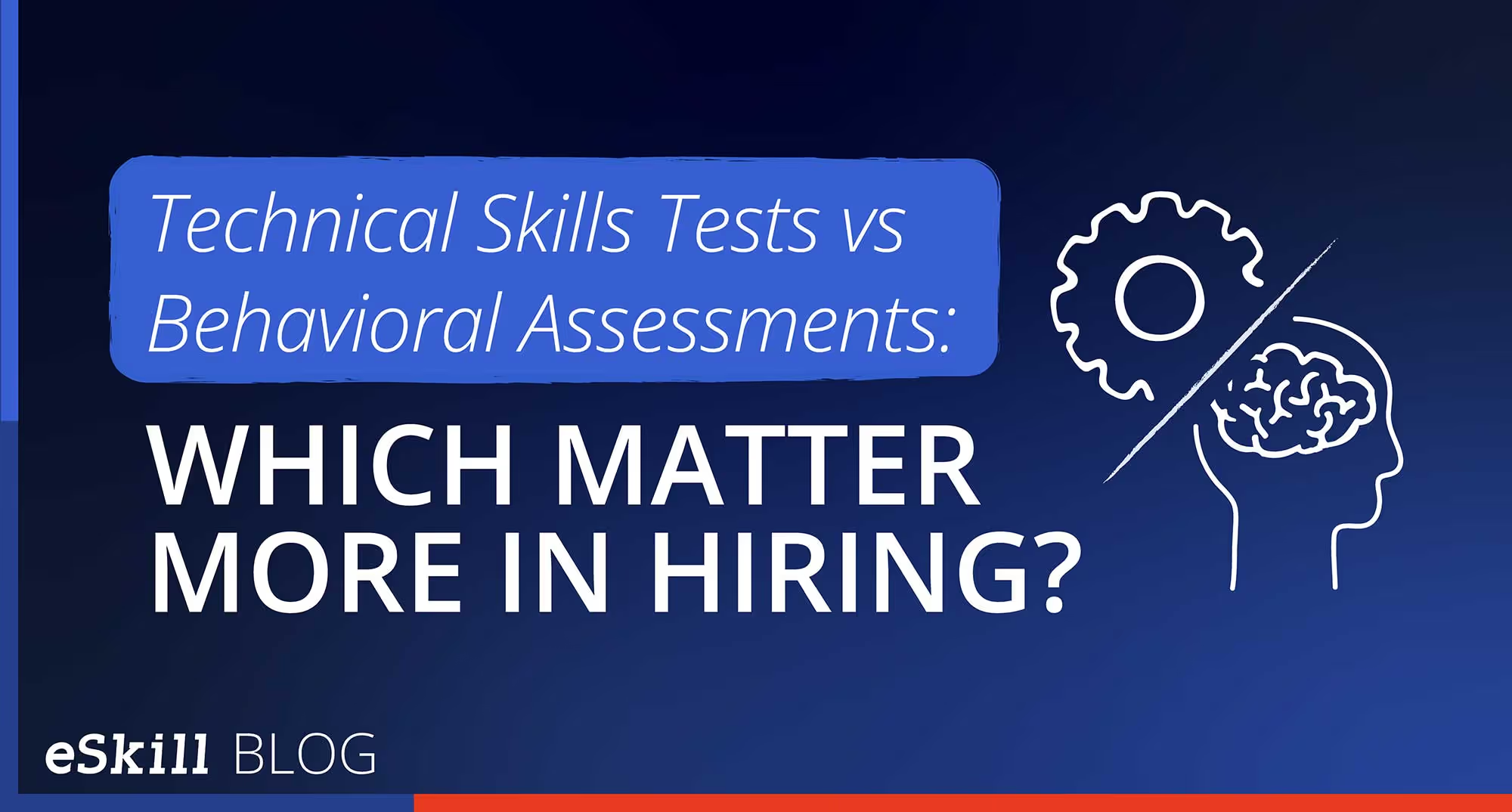The skills and aptitudes employees need to succeed and businesses need to scale and grow are changing at an ever-increasing rate. As a result, technological advances like automation and artificial intelligence (AI) have caused a skills gap and changed how companies hire.
According to the World Economic Forum, over half of employees will require significant reskilling by 2025 as the adoption of emerging technologies accelerates. So, organizations no longer rely on outdated tools such as static job descriptions and annual performance reviews to manage talent. Instead, they use dynamic solutions to continually assess employee competencies, identify development needs, and enable personalized career growth.
Studies show that employing top talent can increase productivity by up to eight times. As a result, many organizations have implemented employment assessment testing to build an agile, future-ready workforce and help employees proactively manage their career development.
What is an Employment Assessment Test?
Employment assessments provide insight into the abilities, aptitudes, skills, and interests of current staff and pinpoint their development needs.
Employment assessments perform several key talent management functions:
- Assess Skill Proficiency Required for Specific Roles: Jobs in many fields, such as software development, financial planning, and customer service, require different skill sets. Employment assessment testing helps HR professionals evaluate candidates’ abilities to improve hiring outcomes.
- Measure Cognitive Capacity: Critical thinking, problem-solving ability, quantitative reasoning, and communication skills are essential for many job roles.
- Evaluate Leadership and Management Potential: Strategic planning, coaching, and change management abilities are required for many jobs—particularly in middle and upper management.
- Assess Soft Skills: Soft skills like collaboration, adaptability, and emotional intelligence are essential for organization-wide jobs.
- Identify High-Performing Employees Who Are Ready for New Challenges: Assessments help align talent to optimal roles now and in the future based on motivations and interests.
- Customized Training and Employee Development: Personalized training and development plans can be tailored to each employee’s needs and career aspirations.
Why it’s Important to Assess Employees
Recruiting top performers is challenging because we are in the midst of a global talent shortage. According to a Korn Ferry report, there is a worldwide talent shortage of more than 85 million people. A Manpower Group study shows that 77% of employers are having difficulty finding qualified candidates for jobs they need to fill.
Employment assessment testing helps HR leaders and hiring managers evaluate employees’ current abilities, identify skill and knowledge gaps, and provide appropriate training and development. Implementing a solid workforce development strategy with the right employment assessment testing solution helps organizations improve overall employee performance and productivity.
Types of Pre-Employment Tests
Employee assessment testing is a tool for HR teams to evaluate skills and competencies across an organization. They can identify development needs, improve job-person fit, evaluate high-potential employees, and enable highly personalized career progression. Some common types of employment assessments are:
- Skills Tests: Skills tests measure job-related abilities and technical proficiency in specialty areas like software programming, financial analysis, and machinery operations.
- Cognitive Assessments: Cognitive assessments evaluate attributes such as critical thinking, communication, decision-making, and analytical reasoning.
- Behavioral Assessments: Behavioral assessments provide insight into employees’ work styles and motivations and help you determine if they are a good fit for a job.
- Simulations: Simulations present realistic scenarios that employees are likely to encounter during a typical day so you can see how they will handle job-related situations.
- 360-degree Feedback: Gathering comprehensive feedback often involves talking to managers, peers, and subordinates to get a 360-degree view of candidates.
- Leadership Assessments: Leadership assessments gauge competencies needed for managerial-level employees, like strategic planning, coaching, collaboration, and change management.
What is an Example of an Employment Assessment?
Employment assessments provide concrete insights rather than subjective perceptions and assumptions about current and prospective talent. Leading pre-employment testing companies like eSkill provide hundreds of pre-designed employment assessments that span all critical job skills and job roles.
When HR professionals ask us, “What are examples of aptitude tests for pre-employment?” these are some examples we cite:
For IT and Technical Roles:
- Programming skills in Java, Python, C# and more
- Network, database, and security management
- Software testing and quality assurance
- Technical troubleshooting
For Finance and Accounting Roles:
- Accounting fundamentals
- Financial modeling and analysis
- Budgeting and forecasting
- Auditing
For Marketing and Communications Roles:
- Marketing strategy and planning
- Content development
- Social media and digital marketing
- Google Analytics and SEO
For Customer Service and Sales Roles:
- Customer service fundamentals
- Sales process and consultative selling
- Cold calling and lead generation
- Account management and retention
For Healthcare Roles:
- Medical terminology, anatomy, pharmacy
- Healthcare regulatory compliance
- Patient intake and support
- Health records management
If you choose the industry-leading eSkill Talent Assessment PlatformTM, you can access a library with subject- and job-based employee skills assessments for virtually every occupation. You and your team can design assessments for specific experience levels by defining question difficulty levels as basic, intermediate, or advanced. You can also build customized employment assessments by choosing questions from multiple tests and adding your own questions.
The following list shows 12 different employment tests, as examples of the skills tests in the eSkill Assessment Library, which you can use as-is or to build customized tests.
- Administrative Assistant
- Customer Service Representative
- Quality Assurance Tester
- C# Developer
- Executive Assistant
- Logistics Manager
- Machine Learning Engineer
- Medical Biller
- Network Engineer
- Web Designer
- Web Developer
- 911 Dispatcher
For example, businesses can use the Web Developer Skill Test to evaluate applicants’ ability to build and manage websites, the Web Designer test to assess candidates’ web creative and design abilities, and the Quality Assurance Tester assessment to evaluate applicants’ ability to test, troubleshoot, and solve website issues.
What are the Two Most Common Types of Pre-Employment Tests?
There are many ways to categorize employment assessments, but experts agree that the two most common pre-employment tests are skills and behavioral assessments.
According to a McKinsey study, hiring superior talent can increase productivity by up to eight times, and in advanced fields such as information management and software development, high performers are 800% more productive than average performers. So, organizations use skills tests to identify top talent. Many have implemented an industry-leading assessment solution like the eSkill Talent Assessment PlatformTM to accomplish the following objectives.
- Hire the Right People: By using skills tests, companies can avoid hiring people who cannot do a job. Hiring mistakes are expensive, hurt team morale, and negatively impact productivity. According to the U.S. Department of Labor, the average cost of a bad hire is $17,000, but it can be much more when accounting for recruiting expenses, incomplete projects, staff disruption, loss of customer goodwill, and potential litigation costs.
- Reduce Turnover: U.S. businesses lose $1 trillion annually due to voluntary turnover, and replacing an employee costs around one-half to two times the employee’s annual salary. If employees are comfortable in a new position and feel like they fit in, it increases the likelihood that they will stay with the company instead of exploring other opportunities.
- Streamline Onboarding: Onboarding is a new hire’s first experience with a company, and it is important.According to the Society for Human Resources Management (SHRM), organizations with an effective onboarding program retain 91% of new hires during their first year of work. Organizations can make onboarding a positive experience by using new hires’ skills test results to tailor the process to their specific needs.
Behavioral assessments help HR professionals evaluate candidates’ personality traits and behavior patterns. Hiring mistakes are more common than you might think. Over 74% of HR leaders say they have hired an employee who ended up being a bad fit for a job or their company culture. This is why many organizations use behavioral assessments as well as skills tests in hiring.
Behavioral assessments provide insight into prospective employees’ attitudes, emotions, values, and motivations and help employers determine whether a candidate fits their company culture. The main types of behavioral assessments include:
- Personality Tests: Personality tests analyze candidates’ behavior traits, preferences, and tendencies and determine whether they fit a job and corporate culture well. Some examples include Meyers-Brigg, DISC, Enneagram, and Big 5 tests.
- Simulations: Simulations present candidates with tasks they will be required to complete if hired. For example, an applicant for a computer programming job might be asked to write code; applicants for a technical writing position may be asked to write a few paragraphs about the company’s products and services, and customer service representative candidates might be asked to role-play a phone, email, or chat conversation with a customer.
- Situational Judgment Tests: Situational Judgment Tests (SJTs) present candidates with job-related scenarios and problems and ask them to choose the best and most appropriate solution from a given set of options. They are an excellent way to measure critical thinking, problem-solving, and decision-making skills and evaluate candidates’ ability to handle real work situations.
- Behavioral Interviews: Behavioral interviews are structured conversations that require candidates to describe past behaviors and experiences so hiring teams can use them as indicators of future performance. HR professionals typically ask candidates to provide specific examples of problems they have encountered and explain how they solved them.
Why Organizations Use Employment Assessments
Assessing employee proficiencies on an ongoing basis is essential to building an agile, high-performing workforce in a rapidly changing business environment. Organizations need actionable insights into the capabilities and potential of their staff so they can provide appropriate training where required. These are some of the key benefits of using employment assessments.
- Identify Top Performers: Employment assessments help you identify star employees. You can then consider them for promotions, leadership roles, and other growth opportunities within the organization.
- Pinpoint Training Needs: Employment assessment testing helps you identify skill and knowledge gaps among your staff. You can tailor training initiatives to address these specific gaps. Focused training is more likely to get results than a blanket approach.
- Goal Setting: Employment assessment testing helps you set goals for the upcoming review period. Goals should align with organizational objectives and address development areas identified in the assessment.
- Salary and Rewards Decisions: Documentation from employee assessments can justify compensation, bonus, and reward decisions. This ensures these decisions are fair and objective.
- Mitigate Unconscious Bias: Around 79% of HR leaders agree that subjective bias exists in recruitment and succession planning decisions. By objectively measuring skills and knowledge, employee assessments help employers avoid unintentional preferential treatment by hiring team members that could influence hiring decisions.
- Prevent Hiring Mistakes: Hiring mistakes are expensive and negatively impact productivity. If a manager earning $60,000 is terminated, an organization’s cost can be as high as $840,000. The organization also loses what it has invested in the employee.
- Reduce Onboarding Costs: Hiring and onboarding a new hire costs as much as a year’s salary. So, if a new hire does not work out, the employer loses its investment and must incur additional costs to recruit and onboard a replacement.
Get Started with Employment Assessment Testing
In today’s highly competitive, rapidly evolving business landscape, organizations cannot afford to waste time on ineffective talent evaluation strategies. Progressive companies know success depends on developing a talented workforce that can quickly adjust to changes in market conditions.
Regular employee assessment tests provide tremendous value for organizations seeking to build an agile, future-ready workforce and employees wanting to manage their success proactively. When you implement an industry-leading employment assessment solution like the eSkill Talent Assessment PlatformTM, you take the guesswork out of hiring and reduce recruiting costs and time-to-hire. Many eSkill clients across all industries have cut hiring costs by 70% and reduced time-to-hire by 60%.
Do you want to learn how employment assessment testing can improve hiring and employee development across your company? Contact us to request a demo.
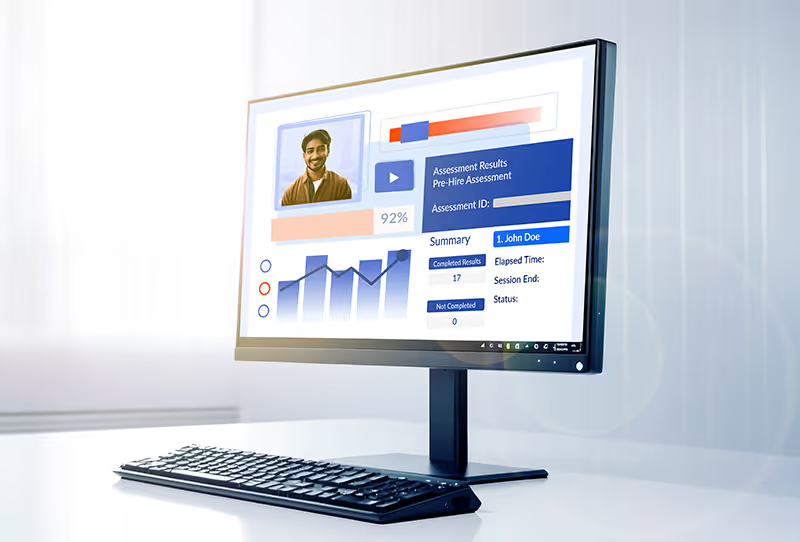
Get ademo.



